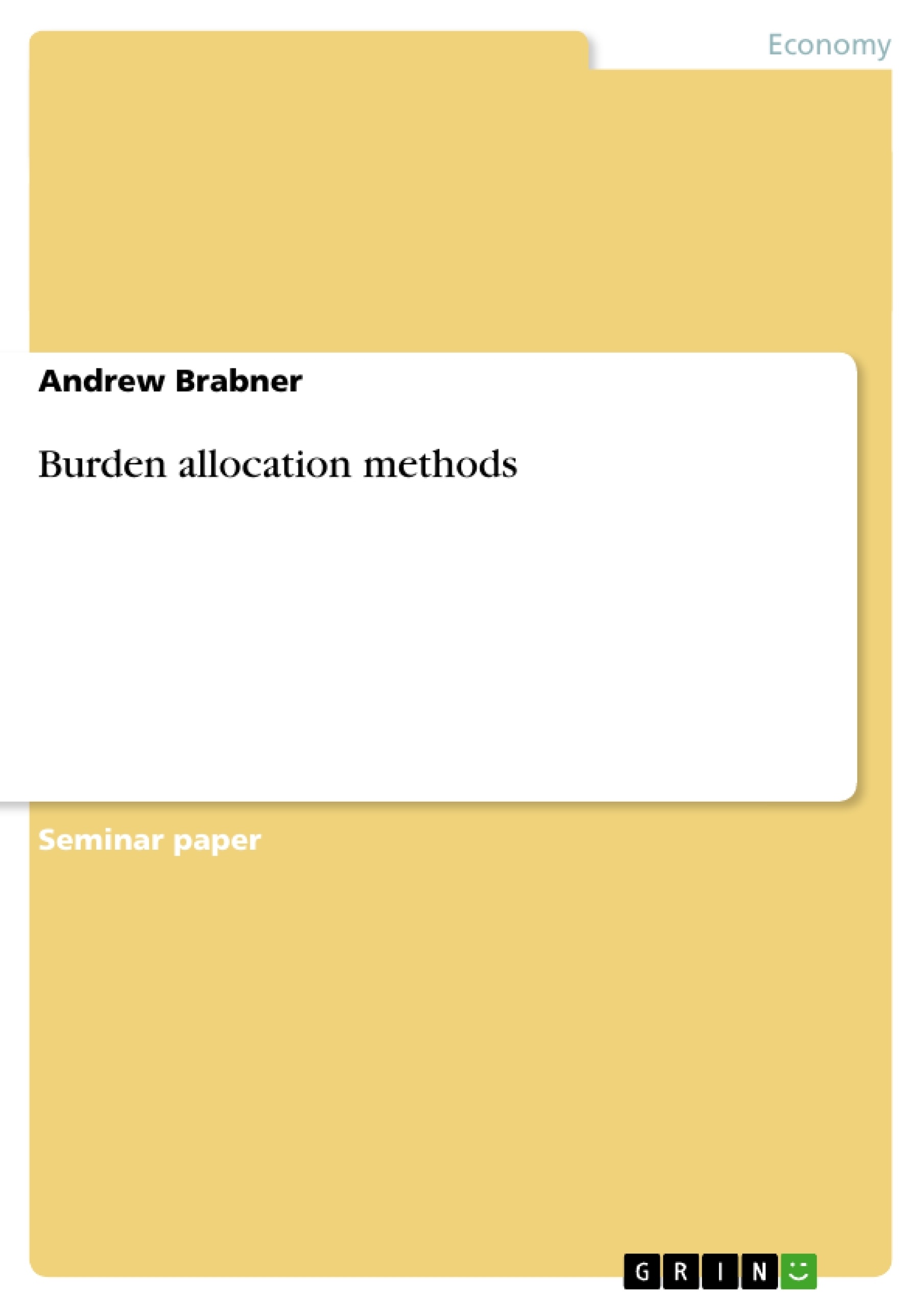Excerpt
Evaluation of Burden Allocation Methods
Introduction
The company and industry are currently both experiencing a process of change. This has lead to the need to evaluate alternatives to the current cost accounting system.
This requires the evaluation of whether burden should be traced to either one, two or three cost pools. Currently burden is only being traced to one. Furthermore the com- pany is certain that it will soon have to purchase expensive machinery, thus changing it operational asset base and cost structure, in order to remain competitive. Therefore I will also examine the effect that this acquisition would have upon the current and alternative systems so as to see which system would be the most appropriate and effective method to supply management with the necessary information need to be able to outperform both market and competition. If any of these methods comes in question at all..
The basis for the analysis is the data presented in below Table 1.
Abbildung in dieser Leseprobe nicht enthalten
Current Asset Base
Attachment I provides the detail which gives Table 2 below.
Table 2:
Abbildung in dieser Leseprobe nicht enthalten
The above table shows the different amounts of burden that would be allocated to the component lots using the different systems. DL $ is as per the current system i.e. burdening per Direct labour dollars only. Acctg Mgr is the result as per the suggestion of the accounting manager that two cost pools should be used - one for administrative and technical functions (allocated per Direct Labour $) and the other includes all other costs from the test rooms - allocated by machine hours. Consultant is the result using the consultants method of three cost pools.
Component Analysis
I will now look at the effects of the different systems by highlighting the effect upon the components.
Abbildung in dieser Leseprobe nicht enthalten
Using the old system these components did not receive enough burden because the processes involved are highly automated. Therefore direct labour does not reflect the true cost that this item incurs for the company. The result of this could be that in the past the components have been sold at too low a price.
Diode
This component shows similar characteristics to the above mentioned IC’s and the dange r also exists that it has been under priced. The change of allocation method causes this item to move up from having the lo west burden of all, to being the third most expensive. This is caused by the fact that it requires low manual labour, but relatively high machine capacity to produce. Furthermore, the high usage of the mechanical test room leads to a marginally higher burden.
Capacitor
These components have a high direct labour content and are therefore shown as the second most costly items under the present cost system. Should the system be changed the burdened cost would reduce.
Amplifier
The cost of this component changes and becomes even less costly under the consultants approach as - proportionately - low testing time is required in the expensive mechanical room.
Summary regarding System changeover
The current system has distorted costs causing components with high direct labour portions to be over and components with low direct labour portions to be under- priced. Therefore a system change is vital especially when one considers that experi- ences made with customers substantiate this and the fact that the company will be required to introduce more and more automation to remain competitive in the future.
Changed Asset Base
The New Costs
Attachment II summarizes the cost effect on the company of the acquisition of the proposed machinery, over the machines useful life of 8 years. I will quickly comment on the calc ulations made to arrive at these numbers.
Depreciation
The double declining balance method was used. Please see the below example calc u- lations for the Years 1, 2 and 3.
Abbildung in dieser Leseprobe nicht enthalten
and so on
Direct Labor Cost
Machine utilization is planned at 10 % 1st Year, I assumed 35% 2nd year and 60% for following years and 4000 hours are available per year. Therefore for year 1:
Abbildung in dieser Leseprobe nicht enthalten
5 minutes of Direct labour are required per machine hour at an average rate of 30$ per hour making:
Abbildung in dieser Leseprobe nicht enthalten
Engineering Cost & Fixed Overhead
These have been given and therefore require no further comment.
Variable Overhead
This has been calculated by dividing total estimated variable cost by the total per year availability of the machinery of 4.000 hours:
Abbildung in dieser Leseprobe nicht enthalten
The expected use in year 1 was 400 hours (see direct labour calculation above) and therefore
Abbildung in dieser Leseprobe nicht enthalten
Consequently variable overhead would be 10.000$ in year 1.
[...]
- Quote paper
- Andrew Brabner (Author), 2003, Burden allocation methods, Munich, GRIN Verlag, https://www.grin.com/document/7645
Publish now - it's free






















Comments